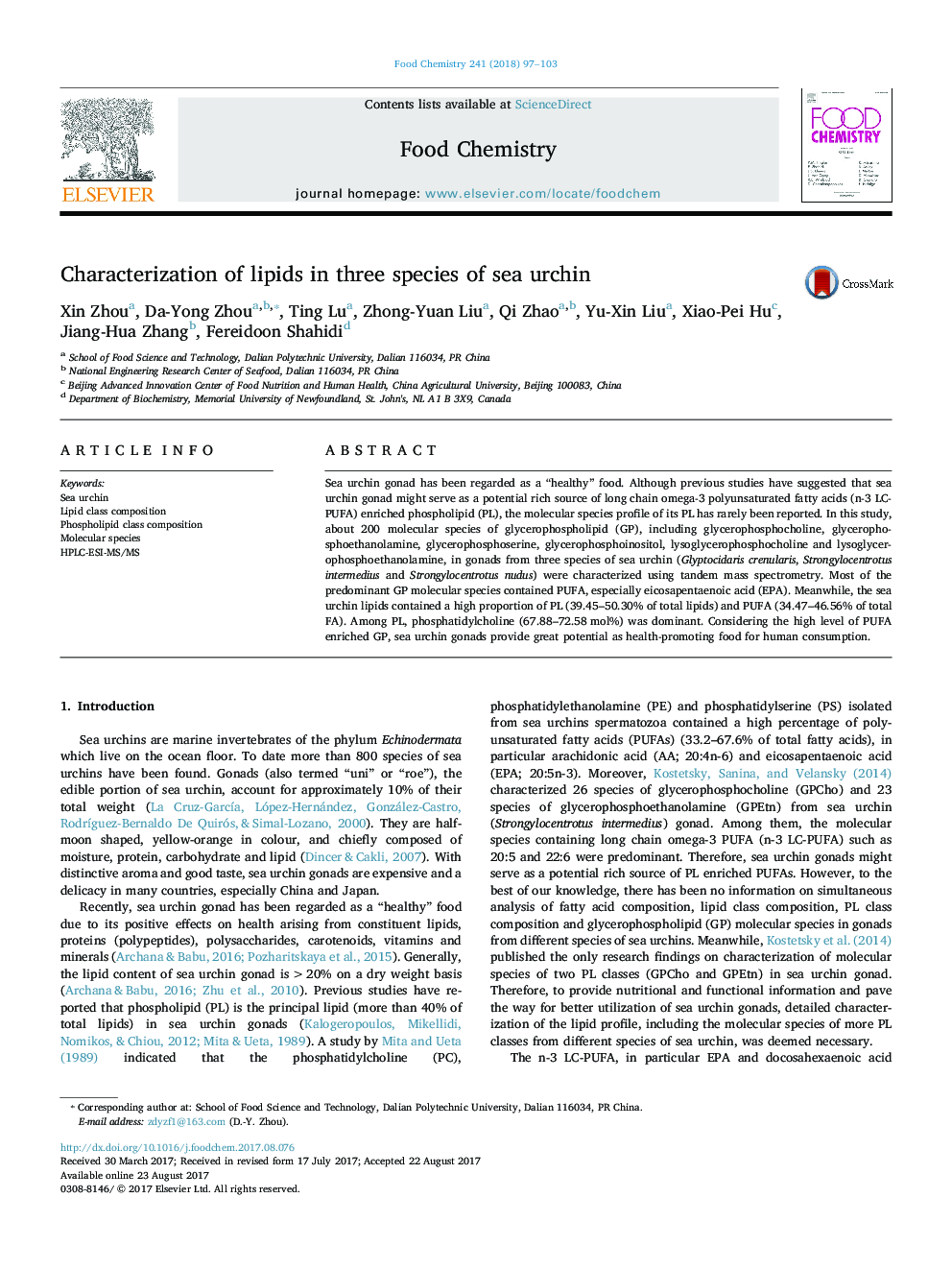| Article ID | Journal | Published Year | Pages | File Type |
|---|---|---|---|---|
| 5133053 | Food Chemistry | 2018 | 7 Pages |
â¢Total lipids were recovered from gonads of three species of edible sea urchin.â¢The lipids contained a high proportion (34.47-46.56%) of PUFAs, especially EPA.â¢Phospholipid accounted for 39.45-50.30% of total lipids.â¢Phosphatidylcholine (67.88-72.58 mol%) was the dominant phospholipid class.â¢About 200 glycerophospholipid molecular species were characterized.
Sea urchin gonad has been regarded as a “healthy” food. Although previous studies have suggested that sea urchin gonad might serve as a potential rich source of long chain omega-3 polyunsaturated fatty acids (n-3 LC-PUFA) enriched phospholipid (PL), the molecular species profile of its PL has rarely been reported. In this study, about 200 molecular species of glycerophospholipid (GP), including glycerophosphocholine, glycerophosphoethanolamine, glycerophosphoserine, glycerophosphoinositol, lysoglycerophosphocholine and lysoglycerophosphoethanolamine, in gonads from three species of sea urchin (Glyptocidaris crenularis, Strongylocentrotus intermedius and Strongylocentrotus nudus) were characterized using tandem mass spectrometry. Most of the predominant GP molecular species contained PUFA, especially eicosapentaenoic acid (EPA). Meanwhile, the sea urchin lipids contained a high proportion of PL (39.45-50.30% of total lipids) and PUFA (34.47-46.56% of total FA). Among PL, phosphatidylcholine (67.88-72.58Â mol%) was dominant. Considering the high level of PUFA enriched GP, sea urchin gonads provide great potential as health-promoting food for human consumption.
